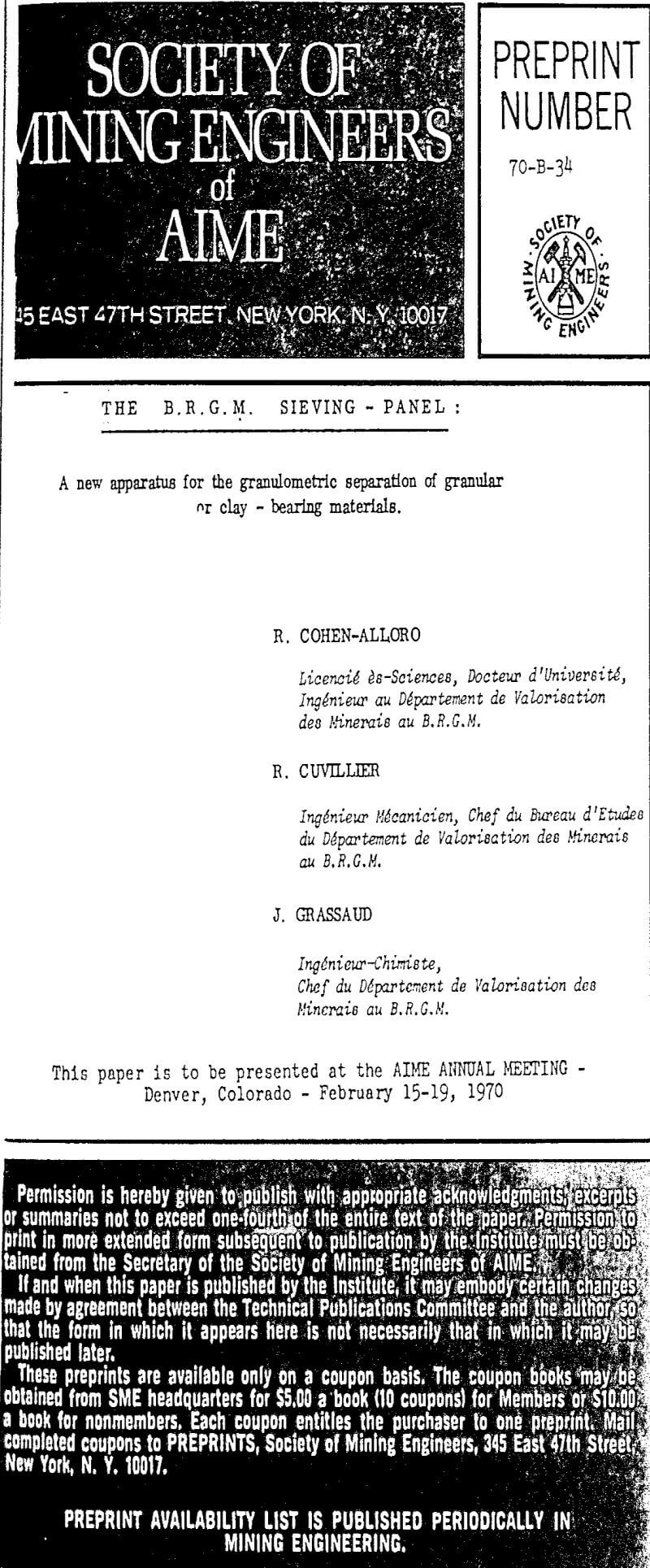Table of Contents
Classical apparatus for granulometric separation generally have limited applications which are found either in the level of the size of separation or in that of the accuracy and the efficiency of the separation or in that of the rate of feed.
Principles and Description of the Sieving – Panel
The study of the problems of separation of fine particles has led the Department ” Valorisation des Minerals ” of the “Bureau de Recherches Geologiques et Minieres ” ( B. R. G. M. ) to construct a new hydraulic classifier.
It is important to notice that the B.R.G.M. Sieving-Panel is a static and simple apparatus which necessitates no moving pieces ( no vibration, shaking or oscillation ) neither pulsation for fluidification, nor difference in pressure on both sides of the sieve for assisting the separation.
The utilization of the B.R.G.M. Sieving-Panel my be orientated, according to need, either for hydroclassification, in a grinding circuit ( ore dressing plants ), or for fine or coarse sieving in a mill for preparation of products of a determined granulometry ( kaolins and clays, grit ), or for thickening or draining ( drilling, dikes for tailings, etc.).
Finally, in principle, the B.R.G.M. Sieving-Panel separates by sieving and not by chance and allows us to be sure of the complete absence of coarse grains misplaced in the fine section.
A series of perfecting tests was made in the laboratory, on a prototype Sieving-Panel of 0.30 x 0.80 m fitted with a cloth of 124 µ, then on another prototype of 1.0 x 1.50 m fitted with a cloth of 104 µ.
The aim of the operations was to test the procedure and the apparatus as much from the point of view of fine sieving as of drainage. For this reason, the apparatus was fed with a very diluted pulp ( 2.5. to 11 g. of dry solids to a litre of pulp) and generally with a clay-bearing material, very rich in fine particles.
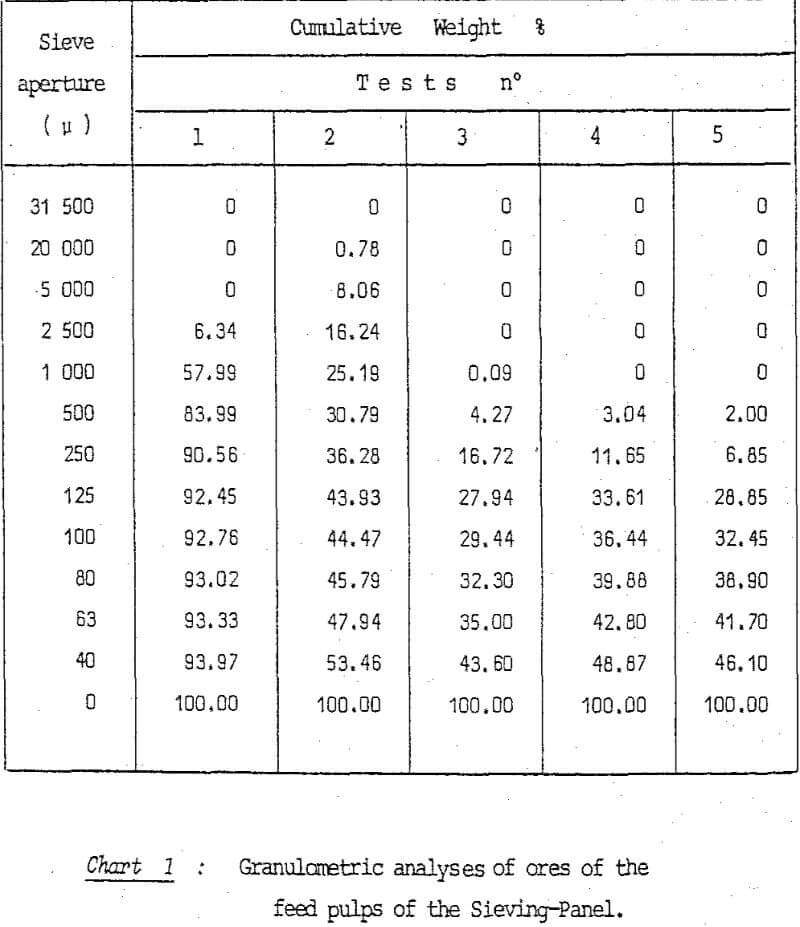

The most important observation resulting from the laboratory tests, is constituted by the remarkable number of imperfections obtained, varying between 0.02 and 0.18 and demonstrating a vary satisfying separation on a cloth of 124 µ with a size of separation ( d50 ) of 65 to 80 µ, with a crude ore of 0 – 1 mm or 0 – 5 mm.
Industrial Tests
In order to make industrial tests, the Sieving Panel was installed on a plant of lead – zinc flotation, first of all as a test on flotation tailings, then as a hydroclassifier in the grinding circuit, replacing a hydrocyclone.
Flotation tailings are composed of a silicated gangue with a granulometry from 0 to 1 mm with nearly 25 to 45 % of grains smaller than 40 µ.
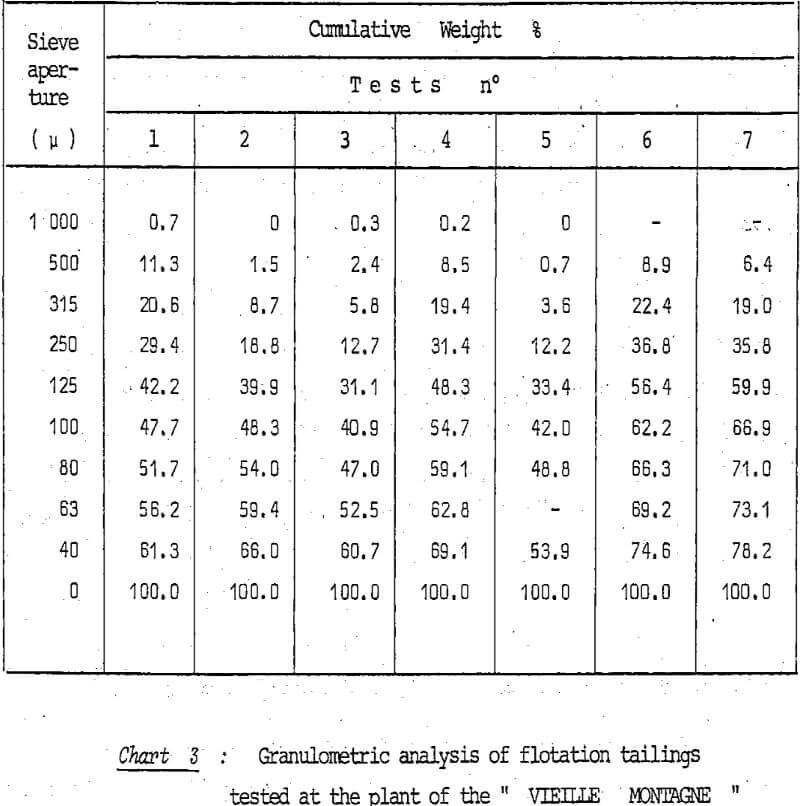
The ore, crushed at 12 mm ( 95 % passing through the filter of 12 mm aperture ) is stocked in a bin with a capacity of 120 tons, which feeds by a conveyor belt a HARDINGE ball mill. At the outlet of the mill, a trommel separates on one side the grains of ore larger than 5 mm considered as tailings and eliminates on the other side those of less than 5 mm which are pumped towards a hydrocyclone from which the undersize returns to the grinding mill and the oversize is directed towards the flotation circuit.
Results of the tests
The examination of the results of tests show that the installation of the Sieving Panel has allowed :
- the amelioration of the granulometry of the material directed towards the flotation circuit, as is shown by diagram 3 of figure 14 , compared to diagram 4 of figure 13 (over-flow of the hydrocyclone).
The pulp of undersizes of the Sieving Panel is, in effect, totally free of misplaced coarse grains ; moreover, as a result of a minimum of regrinding, this pulp contains far fewer overfine grains and is more suitable for flotation. - the increasing by 60 % of the tonnage per hour of ore entering the grinding mill, raising it from 5t/h to a permanent rate of 8 t/h, with higher experimental values ( up to 12. 3 t/h ) which were reached and maintained for only a very short time because of blocking of the flotation circcuit, then brought back to 8 t/h . In the course of all these tests of rate no blending of the filter cloth was reported.
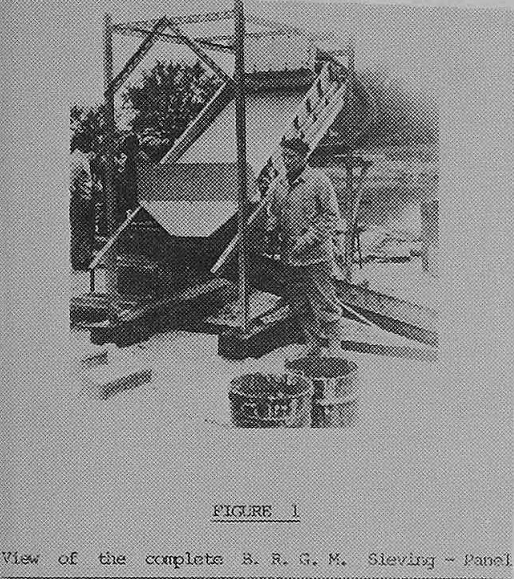 |
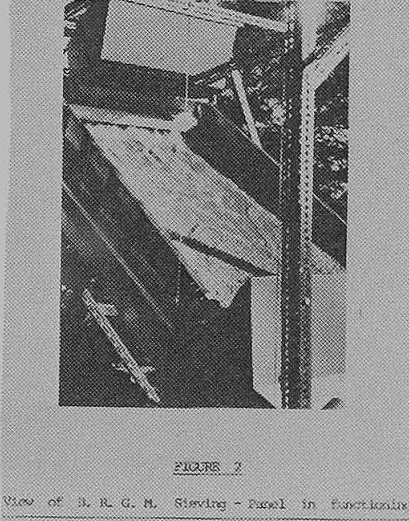 |
 |
|
